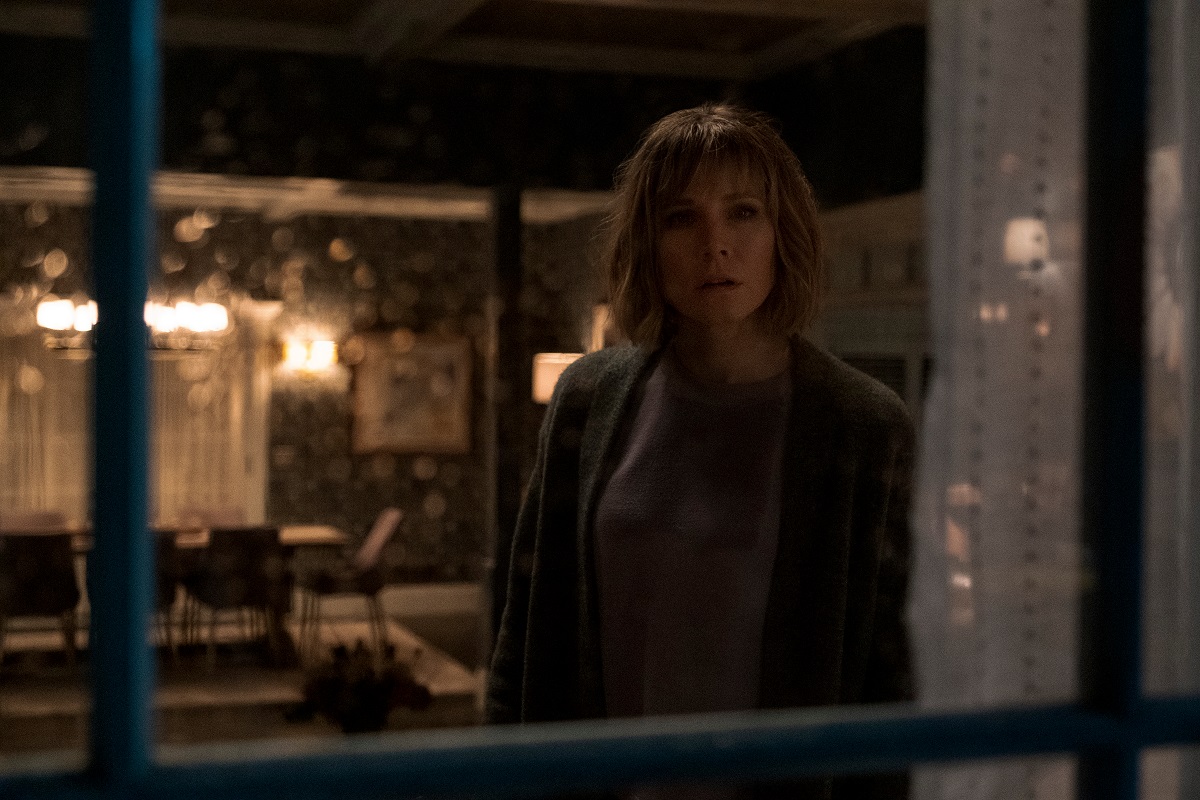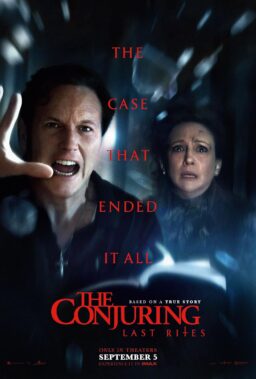Reflecting on Netflix’s bizarre, exhaustingly-named new project, “The Woman in the House Across the Street From the Girl in the Window,” I’m reminded of Lifetime’s “A Deadly Adoption.” Remember how in 2015, Will Ferrell and Kristen Wiig starred in an honest-to-God Lifetime Original Film, a parody that rested entirely on the meta-joke that Ferrell and Wiig were in a Lifetime movie? “Woman in the House…” is basically like that, but for the recent post-”Gone Girl” trend of female-led airport thrillers turned into cinematic psycho-thrillers. And it’s occasionally diverting for a while … until the show’s one joke starts to run out.
Penned by “Nobodies” creators Hugh Davidson, Rachel Ramras, and Larry Dorf, and directed by “Heathers”’ Michael Lehmann, “The Woman in the House…” toys with the hokey conventions of thrillers like “The Girl on the Train” and Netflix’s own “The Woman in the Window” from 2021. The basic story is the same: Kristen Bell fills the Amy Adams/Emily Blunt role as Anna, an ombrophobic painter whose marriage and life fell apart after her young daughter died in a horrific accident. Now, she whiles away her days staring out the big bay window of her elegantly-manicured suburban home, filling her giant glass of red wine straight to the brim, reading mystery novels with on-the-nose titles like The Girl on the Cruise, and going through each day in a fog.
Her life suddenly gets a little more interesting when a handsome, bearded Englishman named Neil (Tom Riley) moves in across the street, along with a nine-year-old daughter (Samsara Yett’s precocious Emma) who could be the spitting image of her own lost child. But one night, she sees—or thinks she sees—Neil’s new girlfriend Lisa (Shelley Hennig), gasping at the window, her throat slit. The next day, Neil tells a frantic Anna that what she saw wasn’t real; Lisa just left for Seattle, you see.

Driven by a sense of justice, or even just something to fill her day, Anna starts playing detective, determined to solve the mystery one overfull glass of merlot at a time.
There’s a delicate art to the straight-faced parody: go too broad, and you risk losing track of your subject. Too subtle, and the jokes barely register. “Woman in the House…” opts for the latter approach, essentially rendering a po-faced recreation of the movies it’s lampooning, but dialing up the absurdity by 5%. In this way, it’s not too dissimilar to sibling Will Ferrell project “The Spoils of Babylon,” which replicated the rhythms of the TV event miniseries of the ‘70s and ‘80s with a few bits of absurdism sprinkled here and there. “Woman in the House…”, on the other hand, doesn’t land quite the same balance, and it suffers as a result.
What gags are there largely work: Bell’s Leslie Nielsen-tier level of commitment is a diverting contrast to the silliness of the world around her. Every time she visits her daughter’s grave for a heart-to-heart, the tombstone sports a different trite, inspirational phrase (e.g. “In heaven, you can dance like no one’s watching”). Her Instagram is the definition of banal, with rote captions like “sunflower” and “cappucino” to accompany each stock-photo image on her feed. Her nosy best friend (Mary Holland) breathlessly admires her skill as a painter, when the works we see are the most motel-art-caliber impressions of flowers. Every few minutes, the show drops us a throwaway gag like Anna’s ex-husband (Michael Ealy), a criminal psychologist, taking their little girl to interview a serial killer for Take Your Daughter to Work Day, or Anna’s creepy handyman Buell (Cameron Britton) endlessly working on their mailbox for what feels like days (and what may be years). The world of “Woman in the House…” is one where airlines randomly decide not to fly to the West Coast all summer, and women can drown in a lake in five seconds flat.

Unfortunately, at eight half-hour-ish episodes, the show can’t (or won’t) maintain that anarchic momentum. There are long stretches of the series where Ramras, Davidson, and Dorf seem content to merely move the story along, presuming that the series’ very existence is enough to keep you laughing. The lack of specific jokes, then, becomes the point: it’s hilarious because it’s deadly serious. That’s fun, too, but it can only take you so far.
There’s also the problem of poking fun at something that a) was hardly a huge hit when it came out, and b) had its own tongue planted firmly in cheek. “The Woman in the Window” was lambasted at the time for its hokey script and over-the-top protagonist, but so much of that felt like purposeful camp; “Woman in the House…” seems to be poking us in the ribs and reminding us how ridiculous the premise and tropes of the genre are, when, yeah, we know they’re silly. That’s kind of the point. We already laughed at Joe Wright and Amy Adams’ frenzied take on the material. This new version feels like putting a hat on a hat.
Granted, “Woman in the House…” goes out with a bang; after eight episodes pointing the finger at every one of the series’ cartoonishly-suspicious characters, it lands on the one you’d expect the least (not to mention who would be funniest for Bell to fight in the knock-down, drag-out brawl at the inevitable climax). And the series ends with an unexpected cameo from an A-lister and the potential for a new mystery to occupy Anna’s time in a second season. I just wish the show had more of that kind of giddy energy, and didn’t stretch out its one-joke premise to such ungainly lengths.












